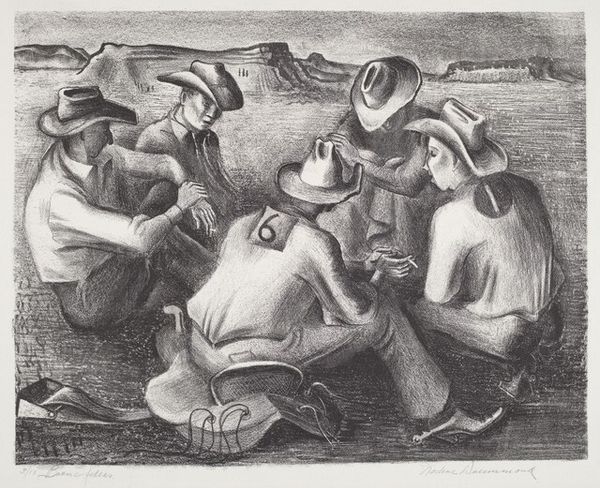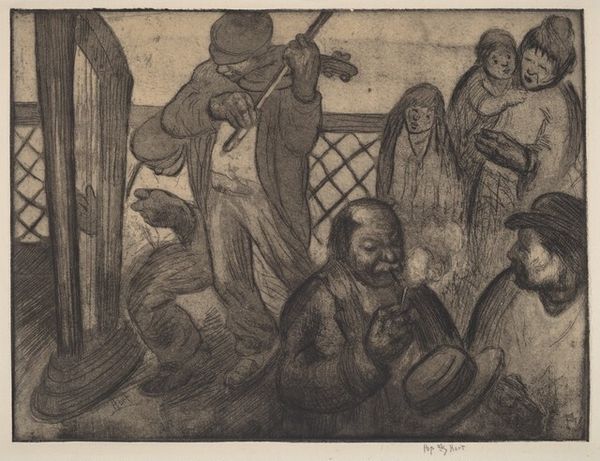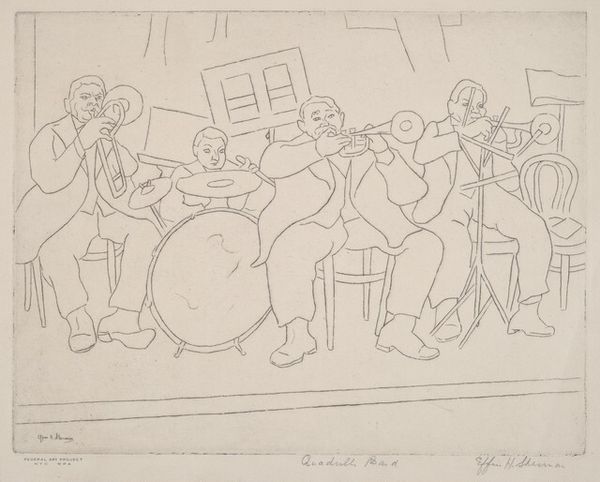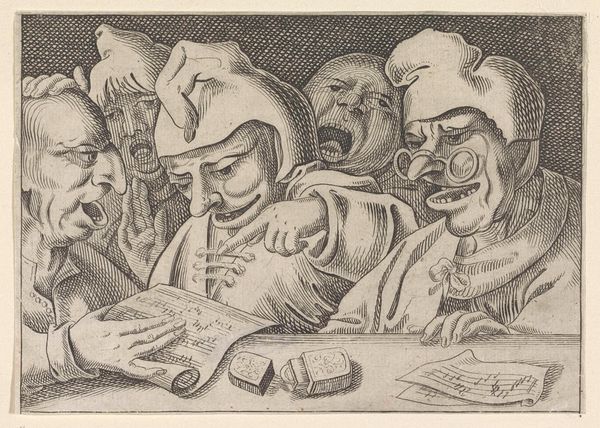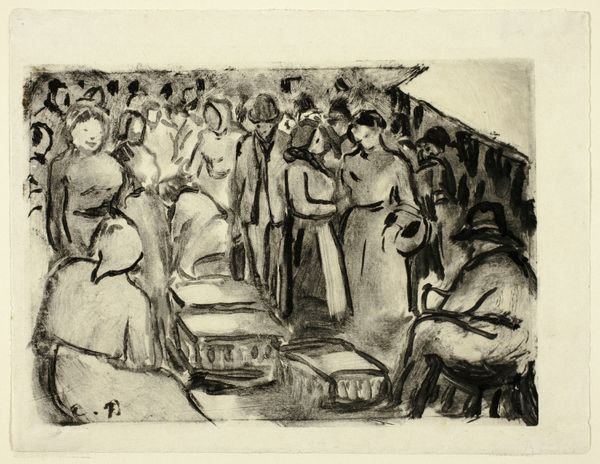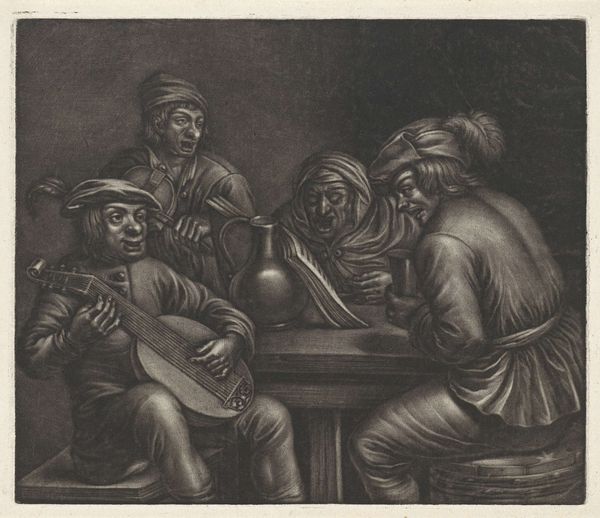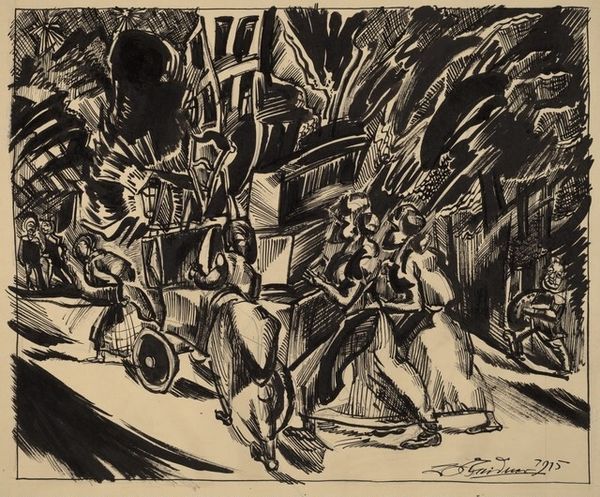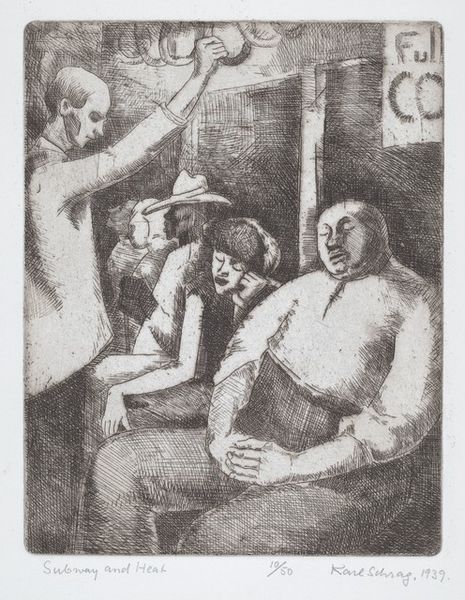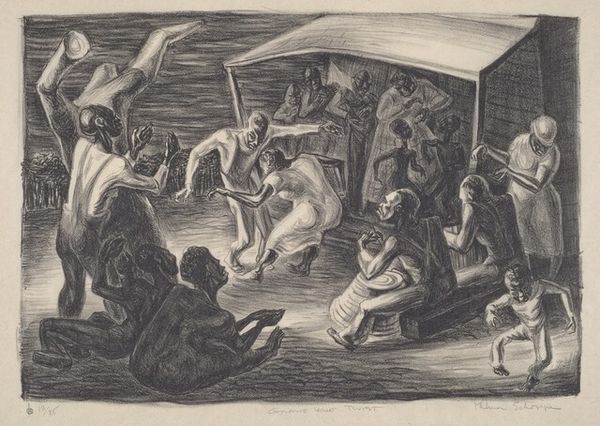
drawing, print, charcoal
#
portrait
#
drawing
#
facial expression drawing
# print
#
charcoal drawing
#
figuration
#
charcoal art
#
mexican-muralism
#
genre-painting
#
charcoal
#
realism
Dimensions: plate: 13.65 × 18.1 cm (5 3/8 × 7 1/8 in.) sheet: 18.1 × 24.45 cm (7 1/8 × 9 5/8 in.)
Copyright: National Gallery of Art: CC0 1.0
Curator: Welcome. Let’s take a closer look at Irwin D. Hoffman’s “La Cucaracha,” created in 1935. It’s a compelling charcoal drawing that reflects a distinct moment in art history. Editor: Whoa. You said charcoal, right? It feels so rich, almost like a lithograph. The mood… it's like a simmering pot about to boil over. Lots of people, guitars, maybe a little… suppressed something? Curator: It does evoke that sense of contained energy. Hoffman's choice of medium, charcoal, allows for this striking contrast. Hoffman was deeply involved in the social realist movement, particularly inspired by Mexican Muralism. These murals were often politically charged and accessible to all. Hoffman saw art as a vehicle for social commentary. Editor: Ah, that makes total sense. I’m getting a story here... Musicians serenading a crowd. Look at those faces in the back. They seem both entertained and...well, judging? The musicians look totally caught up, lost in their world, oblivious to what's around them. Or, more likely, choosing to ignore the societal norms... Curator: The drawing embodies genre painting tradition; focusing on scenes from everyday life. It also illustrates a very complex interplay between performer and audience. Who gets to represent culture and what that representation means to those involved and looking on. Editor: Yeah, who holds the cultural microphone, right? But there's something joyous in their faces. Maybe art for art’s sake can come through, even if things are not perfectly balanced. I just find myself humming a tune… a very slightly out-of-tune tune. Curator: Yes, I think it's also about finding moments of expression. Finding connection even under what may have been rather politically fraught circumstances at the time. Editor: This piece gets under your skin, doesn't it? Kind of makes you question everything, while tapping your foot to a silent guitar. Hoffman wasn’t just sketching a scene; he was channeling an atmosphere. Curator: Precisely. And that atmosphere reflects the complexities of the era he lived in, making “La Cucaracha” a piece of remarkable historical and artistic value.
Comments
No comments
Be the first to comment and join the conversation on the ultimate creative platform.


